11. Notice to Individuals in the European Economic Area, the United Kingdom and Switzerland
This section only applies to individuals using or accessing our Service while located in the European Economic Area, the United Kingdom, or Switzerland (collectively, the “European Countries”) at the time of data collection. Pursuant to the EU’s General Data Protection Regulation (GDPR), personal information is referred to as personal data. For the sake of clarity references to personal information in this Policy concerns personal data in the sense of the GDPR.
We may ask you to identify which country you are located in when you use or access some of the Services, or we may rely on your IP address to identify which country you are located in. When we rely on your IP address, we cannot apply the terms of this section to any individual that masks or otherwise hides their location information from us so as not to appear located in European Countries. If any terms in this section conflict with other terms contained in this Policy, the terms in this section shall apply to individuals in a European Country.
Our Relationship to You. Your personal information is collected and processed by Roadget Business PTE. LTD., Incorporated in Singapore,which is operating the website and the sale of {WEBSITE_NAME} brand products. In other words, Roadget Business PTE. LTD. is the Controller of the data. This means that we are responsible for processing and protecting your personal data.
Legal Bases for Processing Your Personal Information. We rely on the following legal bases under the GDPR in processing your personal information.
Our legal basis to process personal information for the following sections of this Privacy Policy is your consent.
- Section 2 In relation to mobile Advertising and third-party advertising and analytics cookies, that collect your personal information, as described in that Section.
- Section 4(D) Third Party Advertisers
- Section 4(F) Consent
Our legal basis to process personal information for the following sections of this Privacy Policy is to provide our Services to you. Our processing is based on our contract obligations or to take steps at the request of the individual prior to entering into a contract.
- Section 3(A) To Provide You Our Services
- Section 3(C) To Provide You with Service-Related Communications
- Section 3(D) To Provide Customer Support or Respond to You
- Section 4(A) Within Our Corporate Organization
- Section 4(B) Third Parties
- Section 4(E) Co-Branded Services or Features
Our legal basis to process personal information for the following sections of this Privacy Policy is our legitimate interest to better understand you, to maintain and improve the accuracy of the information we store about you, and to better promote or optimize our Services.
- Section 3(B) For Internal Use
Our legal basis to process personal information for the following sections of this Privacy Policy is to comply with our legal obligations, or your vital interest.
- Section 3(E) To Ensure the Security of the Services
- Section 3(F) To Enforce Compliance with Our Terms and Agreements or Policies
- Section 3(G) To Maintain Legal and Regulatory Compliance
- Section 4(C) To Maintain Legal and Regulatory Compliance
Marketing. We will only contact you if you are located in a European Country by electronic means (including email or SMS) based on our legitimate interests, as permitted by applicable law or your consent. If you do not want us to use your Personal Information in this way, please click the unsubscribe link at the bottom of any of our email messages to you or contact us at {EMAIL_ADDRESS}
You can object to direct marketing at any time and free of charge.
Individual Rights. We provide you with the rights described below when you use our Services. We may limit your individual rights requests: (a) where denial of access is required or authorized by law; (b) when granting access would have a negative impact on other’s privacy; (c) to protect our rights and properties; or (d) where the request is frivolous or unrealistic. If you would like to exercise your rights under applicable law, please contact us at {EMAIL_ADDRESS}.
- You can request access or deletion of your personal information, subject to certain exceptions.
- You can correct or update your personal information, object to processing of your personal information, ask us to restrict processing your personal information or request portability of your personal information.
- If we collected and processed your personal information with your consent, then you can withdraw your consent at any time. Withdrawing your consent will not affect the lawfulness of the processing we conducted prior to your withdrawal, nor will it affect processing of your personal information conducted in reliance on lawful processing grounds other than consent.
- You have the right to complain to a data protection authority about our collection and use of your personal information.
If you believe we have infringed or violated your privacy rights, please contact us at {EMAIL_ADDRESS}
so that we may resolve your dispute directly.
Transfer of Your Personal Information. When you access or use our Services, your personal information may be processed or transferred outside the EEA. Such countries or jurisdictions may have data protection laws that are less protective than the laws of the jurisdiction in which you reside. For these transfers we rely on appropriate safeguards as permitted under the GDPR such as Standard Contractual Clauses, contract with Privacy Shield certified companies, and/or transfer the personal information pursuant to Article 49 (1) (b) GDPR to provide our Services pursuant to the Terms of Service. If you do not want your information transferred to, processed, or maintained outside of the country or jurisdiction where you are located, you should immediately stop accessing or using the Services. For further details about these transfers and the safeguards that we use to facilitate such transfers, contact us at {EMAIL_ADDRESS}
.
